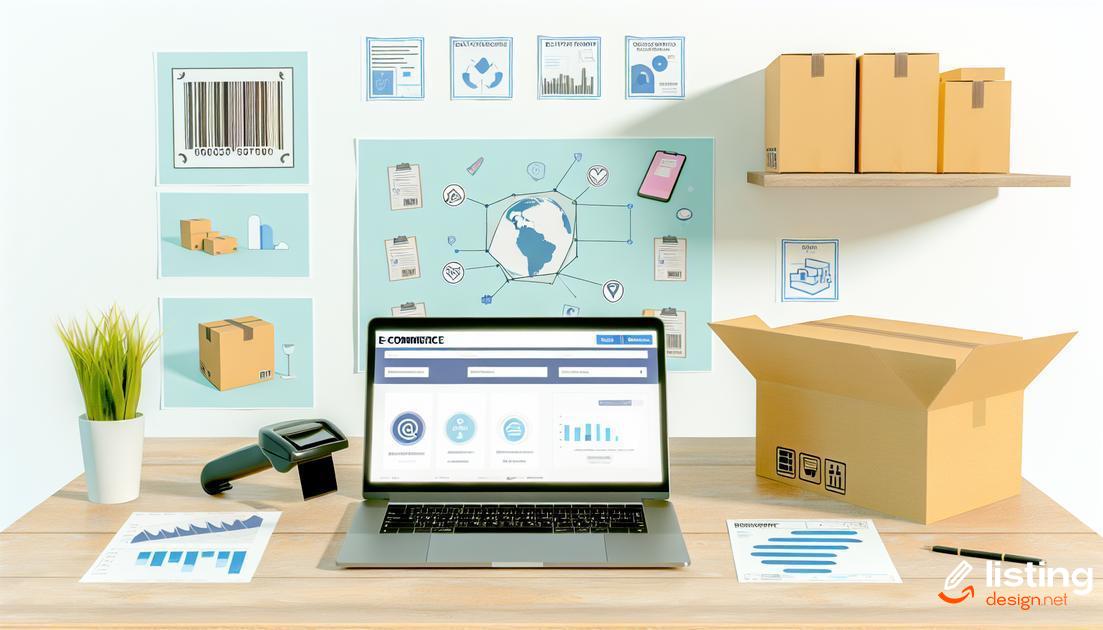Free selling on Amazon might sound too good to be true, but it’s an achievable reality. Navigating Amazon’s fee structure can be daunting, but there are ways to sell without incurring heavy costs. In this post, we will explore how you can get started with zero fees and make the most of free tools available for Amazon sellers. Keep reading to discover success stories and future trends that could shape your selling strategy.
Table of Contents
1. Understanding Amazon’s Fee Structure
Amazon’s fee structure is a crucial aspect for sellers to understand if they want to optimize their profits. There are several types of fees that Amazon charges, including referral fees, variable closing fees, and fulfillment fees.
The referral fee is a percentage of the total sales price, and it varies by category. It’s essential to know the referral fee percentage for your specific category as it directly impacts your pricing strategy.
Variable closing fees apply mainly to media products such as books, DVDs, and CDs. This is a per-item fee in addition to the referral fee, so be mindful if you are selling in these categories.
The fulfillment fees are relevant if you participate in Fulfillment by Amazon (FBA). These fees cover the cost of storing, packing, and shipping your products. Understanding these fees is critical for deciding whether to use FBA or fulfill orders yourself.
Additional fees to consider include long-term storage fees, which are charged for items stored in Amazon’s warehouses for extended periods, and advertising fees if you choose to promote your products on Amazon’s platform.
By having a detailed understanding of these various fees, sellers can make informed decisions about their pricing strategies and how to manage their inventory effectively. This knowledge is fundamental for maximizing profitability while selling on Amazon.
2. Benefits of Free Selling on Amazon

No Listing Fees: One of the main benefits of free selling on Amazon is the elimination of listing fees. Sellers can list products without worrying about upfront costs.
Wider Audience
By selling on Amazon, sellers instantly gain access to millions of potential customers across the globe. Leveraging such a wide reach can boost sales significantly. Access to Established Infrastructure: Amazon’s robust infrastructure, including its fulfillment networks and customer service, can be utilized without extra charge. Sellers can benefit from speedy shipping, customer trust, and efficient returns processes.
Cost Efficiency
Without the burden of listing fees, sellers can allocate their budget towards inventory, marketing, or other essential resources to grow their business. Brand Exposure: Free selling on Amazon provides an opportunity for brand visibility. Even without paying fees, sellers can gain traction and improve their brand recognition in the competitive market.
Educational Resources
Amazon offers various resources, tutorials, and support for sellers to optimize their listings and improve sales performance. Sellers can take advantage of these without additional costs.
3. How to Get Started with Zero Fees
To get started with zero fees on Amazon, it’s crucial to adopt strategic approaches. Begin by exploring the fulfillment options that don’t incur additional costs. Utilizing Amazon FBM (Fulfilled by Merchant) allows you to handle your packaging and shipping, avoiding FBA costs.
Next, identify products that can be sourced and sold with minimal overhead. Look for items with high demand and good profit margins. Consider dropshipping models to eliminate the need for inventory.
Taking advantage of promotional offers and sign-up incentives can also reduce your initial expenses. Amazon occasionally provides free trials or discounts for new sellers.
Finally, optimize your product listings with SEO-rich descriptions and high-quality images. This enhances visibility and attracts more buyers, increasing your chances of selling without incurring extra fees.
By combining these methods, you can effectively start selling on Amazon free of charge and maximize your profit margins.
4. The Best Free Tools for Amazon Sellers

Amazon Seller Central
Amazon Seller Central is the main hub for managing your selling account. Here, you can list products, track orders, and access performance metrics. It’s indispensable for new sellers who need an all-in-one platform.
Helium 10 Free Tools
Helium 10 offers a suite of free tools that include a product research tool, listing optimizer, and inventory protector. These tools help in identifying lucrative products and ensuring your listings are optimized for better visibility.
Jungle Scout Sales Estimator
Use Jungle Scout’s free sales estimator to gauge the potential sales volume of a product. This can be incredibly helpful in selecting the right products to sell, minimizing risk, and maximizing profit.
Keyword Tool Dominator
Keyword Tool Dominator helps generate long-tail keywords that can increase your product listings’ visibility. Long-tail keywords are essential for reaching a more targeted audience, which can result in higher conversion rates.
Keepa
Keepa is a free price tracking tool that shows the price history of Amazon products. This is useful for competitive pricing strategies, enabling you to adjust prices in response to market trends.
SumoMe
SumoMe offers free tools for building email lists and increasing website traffic. While primarily for website management, it’s beneficial for Amazon sellers who want to drive traffic to their listings through external channels.
Google Keyword Planner
This free tool from Google is excellent for keyword research. It helps in finding high-volume and relevant keywords to include in your product titles, descriptions, and backend search terms.
SellerApp’s Chrome Extension
The SellerApp Chrome Extension provides insights into keyword rankings, product trends, and competitor analysis. This tool is valuable for ongoing market research and staying ahead in the competitive landscape of Amazon selling.
5. Common Pitfalls and How to Avoid Them
Selling on Amazon without fees can be enticing, but many sellers fall into common traps that hurt their profitability. Misunderstanding Amazon’s Policies: Knowing Amazon’s terms and conditions is crucial. Violating them may result in your account getting suspended. Thoroughly read and understand these guidelines.
Ignoring SEO Best Practices: Poorly optimized listings get less visibility. Use relevant keywords, clear titles, and detailed descriptions to improve search rankings.
Overlooking Inventory Management: Not keeping track of stock can lead to missed sales opportunities and negative customer feedback. Utilize tools to monitor inventory levels effectively.
Neglecting Customer Service: Responding slowly to customer inquiries or ignoring reviews can damage your reputation. Prioritize customer satisfaction to foster positive reviews and repeat business.
Underestimating Competition: Amazon is a competitive marketplace. Conduct regular competitor analysis to stay ahead, adjust pricing strategies, and improve your product offering.
By being aware of these pitfalls and taking proactive measures, you can enhance your chances of success and unlock profits without fees on Amazon.
6. Maximizing Your Free Amazon Seller Account

Optimize Your Listings: Ensure each product listing is fully optimized with high-quality images, detailed descriptions, and relevant keywords. Utilize Amazon’s search engine to improve your product’s visibility.
Leverage Customer Reviews: Encourage satisfied customers to leave positive reviews and respond promptly to any negative feedback. High ratings can significantly boost your sales and credibility.
Utilize Fulfillment by Amazon (FBA): While focusing on free selling options, consider using FBA selectively for high-demand products. This can help maintain customer satisfaction and enhance your seller reputation.
Track Performance Metrics: Regularly monitor sales data, customer behavior, and traffic sources through Amazon Seller Central’s analytics tools. Identifying trends and areas of improvement is crucial.
Engage with Your Audience: Build a loyal customer base by engaging through Amazon’s messaging system. Prompt responses to inquiries and personalized communication can foster better relationships.
Stay Updated with Amazon Policies: Keep abreast of Amazon’s policy changes and updates. Adhering to the latest guidelines will help you avoid penalties and maintain a smooth operation.
7. Real-life Success Stories
John’s Breakthrough
John was a small business owner struggling to make ends meet. With limited capital, he couldn’t afford Amazon’s fees. By leveraging Amazon’s free selling options, John listed his products without worrying about overhead costs. Within months, his sales doubled. John’s story is a testament to how eliminating fees can spur growth.
Susan’s Journey
Susan, a stay-at-home mom, wanted to contribute to her family’s income. She started with Amazon’s free selling tools. Using detailed product descriptions and competitive pricing, Susan attracted a loyal customer base. Today, she manages a thriving online store and enjoys the flexibility of working from home.
Mike’s Amazon Strategy
Mike had a unique approach. Instead of competing on price alone, he focused on niche markets. By targeting specific audiences and leveraging free promotional tools, Mike maximized his visibility. His strategy paid off, and now he is recognized as a top seller in his category.
Angela’s Transformation
Angela transitioned from a traditional retail job to selling on Amazon. She utilized free seller resources to understand the market better. Implementing these insights, Angela optimized her listings and saw significant improvements in her sales figures. Her success underscores the impact of effective education and resource utilization.
8. Future Trends in Free Selling on Amazon

As we look ahead, several future trends in free selling on Amazon are worth noting. One major trend is the increasing use of artificial intelligence (AI) and machine learning. These technologies are helping sellers optimize their listings and enhance customer engagement. Through AI, you can predict trends, understand customer preferences, and automate responses.
Another trend is the growing emphasis on sustainability. Consumers are becoming more eco-conscious, and sellers who offer sustainable products or use eco-friendly packaging are likely to attract more customers. Make sure to emphasize these aspects in your product listings and marketing materials.
The rise of social commerce is also influencing how products are sold on Amazon. Integrating your Amazon store with social media platforms like Instagram and TikTok can help reach broader audiences. Social proof, such as reviews and user-generated content, plays a crucial role in this strategy.
Additionally, the use of enhanced brand content (EBC) will continue to grow. EBC helps sellers provide a richer and more engaging shopping experience, increasing conversion rates. Utilize high-quality images, videos, and comprehensive product descriptions to make your listings stand out.
Lastly, expect to see more sellers leveraging omnichannel strategies. Combining multiple sales channels, such as a standalone website, physical stores, and Amazon, can provide a seamless shopping experience for customers and help diversify revenue streams.


